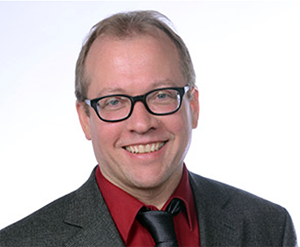New education center connects researchers, educators
Imagine a third-grade teacher in Davenport, Iowa, struggling to teach fractions to a class of students with academic challenges.
Now imagine a researcher in Denver, Colorado, who has just published a two-year study of effective ways to teach fractions to special-needs students.
Traditionally, those two individuals—one with need for real-world assistance and the other with research expertise in that exact area—would likely never connect with each other.
Kent Seidel, Ph.D., wants to change that.
A self-proclaimed “research matchmaker,” Seidel has joined the School of Education and Human Development (SEHD) as the inaugural director of the new Center for Practice Engaged Education Research (C-PEER).
“What we’re doing with C-PEER may be a first in the country,” Seidel said. “We are matching researchers with educators, we are matching information with need, we are matching tools with teachers seeking those tools and ultimately, students will benefit.”
Are you an educator, school administrator or researcher who would like to get involved with C-PEER?
Please visit C-PEER.org to join the free research network.
Traditional Education Research
To better understand why C-PEER’s approach is unique, it helps to look at how research has traditionally been done in the field of education. Typically, a researcher applies for a grant, finds a study site in a local school district, recruits a school and a teacher, collects data, analyzes the data and publishes the results in a scholarly journal—an article that few people, including the teacher who participated in the study, will ever see.
“Researchers have not been rewarded for working outside their silo, across departments, disciplines and institutions,” Seidel said. “They are not rewarded for publishing for a general audience. Research tends to stay in one world, and the classroom stays in another world.”
Researchers are rewarded for picking apart a complex problem and drilling down to study its essential parts. Seidel refers to this as “assembly required” research, which is hard to use in day-to-day practice in the classroom. To a non-researcher, “assembly required” results feel fragmented; they address a micro-problem. A classroom teacher would have to find multiple studies and “reassemble” them to get help addressing big-picture issues.
Education researchers face another challenge. They cannot predict their results will be true in all populations because it is almost always impossible to set up a controlled, randomized study in education. No two teachers, no two groups of students, no two schools, no two districts are alike, so at best, a researcher can usually only say that findings “show promise.” Depending on the circumstances, research findings can have very different results in classrooms across the country.
“This is one reason research often doesn’t connect with practice,” Seidel said. “At C-PEER, we’re tackling these problems head-on. We are setting up a network for researchers and educators to work together across school, district, higher education and research sites.”
“We are very excited about the launch of C-PEER,” said Dean Rebecca Kantor. “It is a research center that leverages our strong partnerships with schools and communities in order to engage in research with not on schools, communities and districts.”
The C-PEER Difference
C-PEER wants educators and researchers to think differently about how they do their work, with a goal of helping educators use research as an additional tool in their toolbox to help students learn.
“Teachers can change their world if they want to,” Seidel said. “We will provide some resources to help them.”
C-PEER’s roles include
- using or doing research to give teachers realistic expectations—neither too high nor too low—for their students
- serving as a clearinghouse to share information about what teaching strategies are succeeding around the country
- personalizing promising research by trying it out in different populations and revising recommendations to fit different student needs
Seidel emphasizes that C-PEER wants educators to be sophisticated partners with researchers because teachers understand the “context” of their students: what happened in previous grades, in their family and in their community. “Teachers are closest to kids,” Seidel said. “They are the best and possibly only ones who can find something valuable in research to improve learning results.”
In turn, teachers and administrators will be able to look to C-PEER for real solutions in real time. C-PEER can help a school or district set up research focused on its goals and perform ongoing evaluations of new education approaches.
“C-PEER’s main focus will be rapid-cycle impact and improvement research to help us work with our partners to identify when teaching practices are working, for whom and in what ways,” Kantor said.
C-PEER: Living Up to the Name
In addition to leading C-PEER, Seidel will do personal research focused on performance-based approaches to improving educator support and school quality. He will also work closely with SEHD faculty who are already involved in practice-engaged research, including faculty members in teacher education, culturally and linguistically diverse education, the Center for Transforming Learning and Teaching and a variety of doctoral programs.
Seidel envisions a day when C-PEER does what the name implies: facilitates the connection between researchers addressing the problems of educators and educators striving to improve daily instruction. To launch the center, he has begun connecting with local districts and school leaders. He is also developing a website that ultimately could curate research findings in a way that best makes sense to teachers as well as to researchers.
He understands that his approach to education research might be seen as novel—even threatening—to other institutions of higher education, but he believes that rapid advancements in technology enable competitors to work together in advancing the field.
“We’re saying to the world that there is more than enough work to go around,” Seidel said. “Our goal as researchers in education is to improve the outcomes for kids being educated. If competition blocks us from doing the best possible work for kids, then we have to think about competition in a new way.”


